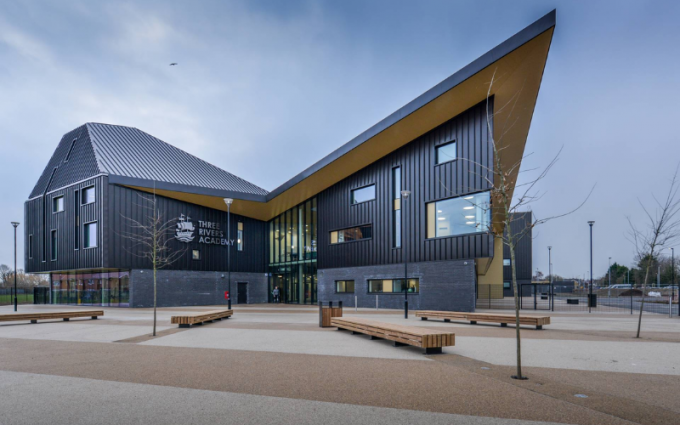Ben Travitzky, headteacher (acting) of Baltonsborough Primary School, in Somerset, (pictured above) explains why he decided to embed the Thrive Approach® at the school and how he soon started to see the results.
I was asked to consider the short-term impact of introducing The Thrive Approach to our small village primary school. As context we have 103 children, and we are situated in rural Somerset. We have a diverse intake with a high percentage of SEND and pupils with traveller status. We are in line with the national average for pupils with Free School Meals and, like everyone, our families had a broad range of experiences through lockdown.
I wondered for a long time about how the staff, governors, parents, and children would respond to my introduction of The Thrive Approach. I imagined that they would think I was woolly and irresponsible for taking focus away from concrete academic achievement and putting it on self-reflection and discussing feelings. However, I noticed that every time I discussed it with someone they would sit forward, they would ask questions and they would relate it to their own experiences. In fact, they would often go away, do their own research and come back even more engaged.
Our introduction to The Thrive Approach was incremental. It began with my practitioner training during lockdown. This provided me with the knowledge and understanding to support our teachers to plan a learning experience for the start of the academic year in September on the development of our brains and stress regulatory system. We also collaborated with Rose Webb (South West Regional Manager) to lead a whole staff inset on the Thrive model of development and to introduce good practise eg checking in with metaphor, being with children in their feelings and scripts that are useful to shine a light on certain behaviours. We were fortunate that many of our governors also attended this training too. After this, 100 per cent of staff were able to evidence ways their learning had impacted on their interactions with children and 100 per cent of staff felt the implementation of this approach would benefit children’s social, emotional and mental health.
From this point on I have continued to cascade good practise to the staff and parents. We have done this through weekly staff meetings which prep teachers for the new techniques in the coming week. I then share that learning with the children in daily assemblies and we have time to reflect and develop on that practise on Thrive Fridays (a 30 minute slot following assembly). In turn, I expand on this for parents in our Friday newsletter so that they can explore the technique or language with children at home. This explanation is echoed to all staff in our weekly staff email as well. This approach has enabled us, as a community, to explore and implement our learning so far.
To monitor the effect this was having in school we have surveyed the pupils twice so far. The initial results indicated that within the first week 90 per cent of children were able to explain how their brains developed in three stages since birth and could use the crocodile, watch dog and wise owl to explain the roles of their brain stem, limbic system and neo-cortex. This learning had a positive impact on 87 per cent of children feeling that they were safe at school within the first five days back after lockdown. By the end of September 99 per cent of children could explain this model of their brain, could represent it with their hands and use this model to describe how different sensory input might cause you to ‘flip your lid’ and become dysregulated. Further to this after having been in school for a month 98 per cent of children felt safe. Interestingly of the children who had felt their safety had improved in this time 75 per cent of them had been working with an adult on a Thrive action plan.
Lesson observations evidenced that staff were adopting the language of regulation into their teaching and through their own reflective language were modelling to children how to observe the sensations in their body, name them and then discuss their impact and ways to work through this. For example, one teacher referred to children feeling stormy in maths because it had felt challenging and they had worked through this using a breathing technique to soothe their limbic system. They had then encouraged the children to ask for help if they were experiencing something similar. The ongoing narration of sensation and emotion was present across the school and was evident in the children’s own reflections too. The impact of this was that they recognise the role of stress and challenge in their learning and ways to cope with that.
Parents have noticed an increase in children’s emotional intelligence with 97 per cent reporting that they had seen evidence of the above learning at home. They have also stopped me at the gate in the morning to comment on what a difference it is making in their home lives to have a shared vocabulary for noticing, acknowledging and processing emotions.
What has also been a benefit as a manager (especially in these emotionally-turbulent times) is that a culture of self-reflection and valuing feelings has created a much safer work-place for staff. I believe very strongly that our relationships as staff are a model for children, and The Thrive Approach has given us a toolkit for managing those with respect, transparency, and dignity.
I cannot stress enough the value of The Thrive Approach in the short term. We have experienced a cultural shift in a matter of weeks, and I am extremely curious to see if the improved emotional regulation of the children has a positive impact on their attainment as we move through the year.
Ben has written a follow up to this piece about the impact of Thrive in term two which can be read here.
Over to you
Reduced anxiety and behavioural incidents. Calmer classrooms filled with engaged leaners. Improved relationships with parents and carers. These are just some of the outcomes reported by settings embedding Thrive’s whole-school approach to mental health and wellbeing. Are you ready to join them? Click here to get started.
Pass it on
Small actions can lead to a big ripple effect. If you enjoyed this post or found it helpful, please consider supporting us in our mission to help every child and young person feel safe, supported and ready to learn by sharing it using the social media buttons below.
Want to join a like-minded community of senior leaders and classroom staff benefitting from insights and strategies to improve attendance, behaviour and attainment? Add your email address below. (It’s easy to unsubscribe).

_680.jpg)
_680.png)
_680.jpg)

